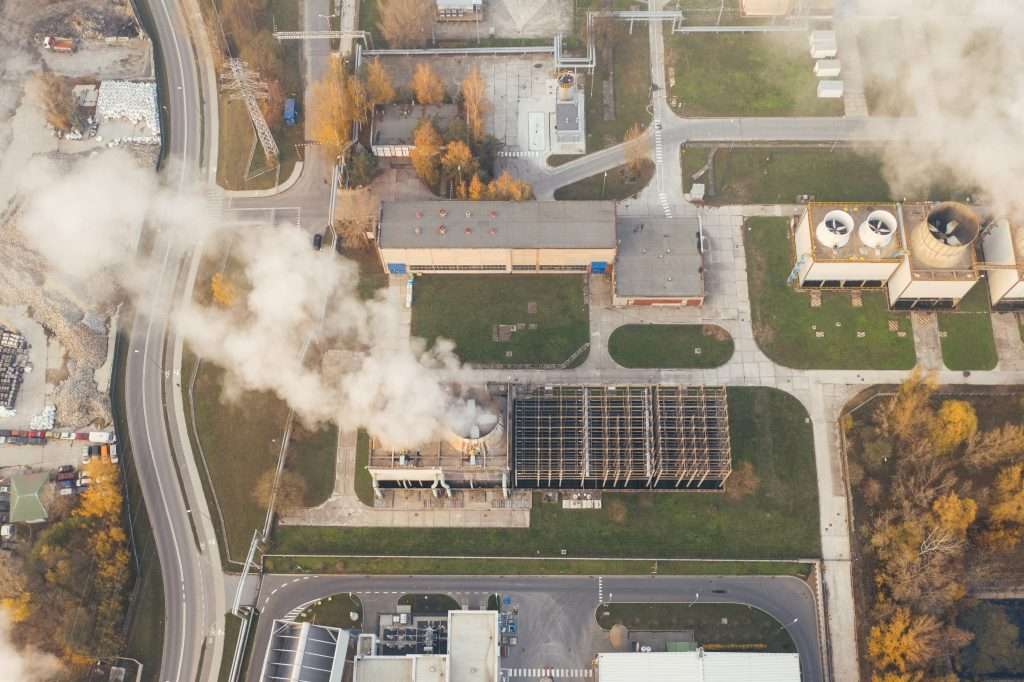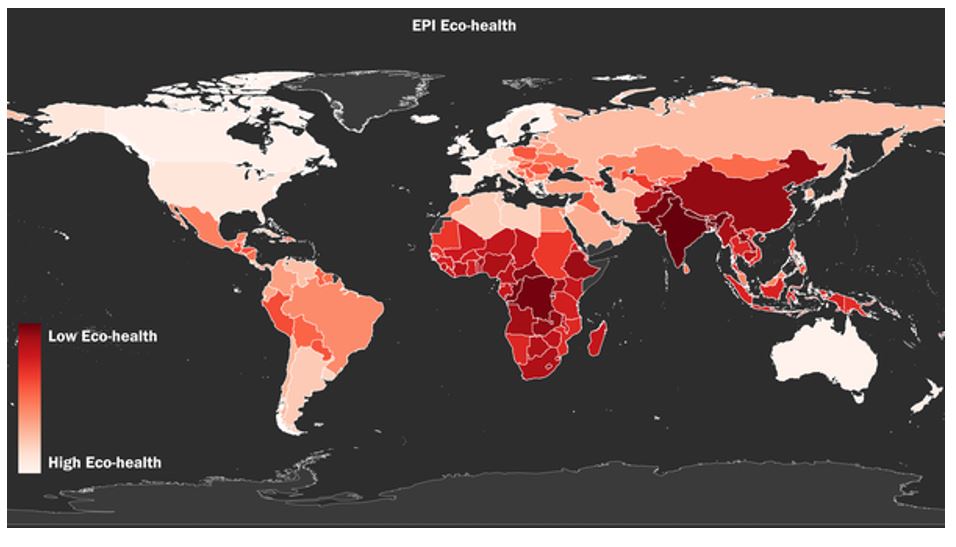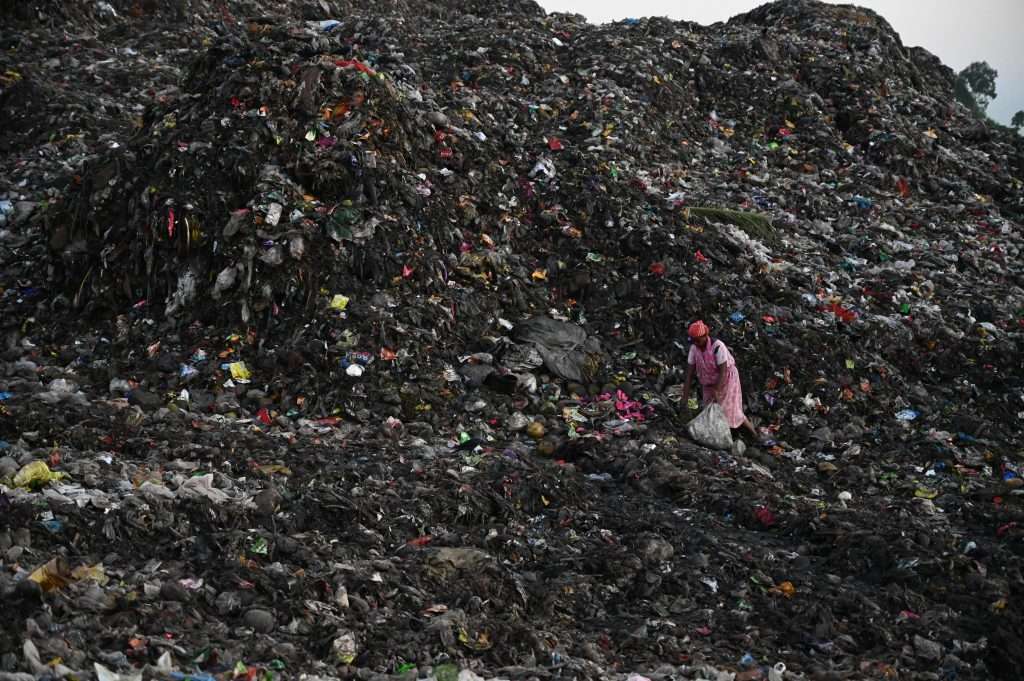Environmental Pollution is Still a Problem
The earth is undergoing a lot of changes primarily due to human activity. Global development continues to negatively impact the environment at many scales (Rhind, 2009). The consequences of human activity are wide-ranging and far-reaching, including deforestation, desertification, biodiversity loss, environmental pollution, land degradation, global warming and climate change, just to name a few. At the moment, global attention is resting more on climate change as the main challenge we are facing. In order to ensure environmental sustainability, our focus must include all environmental issues confronting humanity.
Environmental pollution continues to cause real problems. In 2019, environmental pollution was responsible for an estimated 9 million annual global premature deaths (Fuller et al, 2022). This was 16% of all global deaths and it resulted in total economic losses of $4.6 trillion (6.2% of global economic output). Air pollution was responsible for the highest number of deaths (6.7million). In the same year, air pollution’s global contribution to lung cancer, stroke and heart disease deaths were 36, 34 and 27%, respectively. Apart from air pollution, toxic chemical pollutants can elicit similar morbidity and mortality effects.
This article looks at the impacts of environmental pollution to highlight the urgency of global action. We also discuss the ways in which the world is starting to tackle the problem.

Environmental Pollution and its Impacts
Environmental pollution is the addition of any substance (solid, liquid, or gas) or any form of energy (such as heat, sound, or radioactivity) to the environment at a rate faster than it can be dispersed, diluted, decomposed, recycled, or stored in some harmless forms.
https://www.britannica.com/science/pollution-environment
The effects of environmental pollution are enormous, transcending geographical boundaries and enduring time and season. Pollutants often have devastating consequences on human and environmental health (Manisalidis et al, 2020). In a 2010 study, scientists found significant correlation between increased concentrations of urban mixture of air pollutants, and increased mortality from cardiovascular and respiratory diseases in five Australian and two New Zealand cities.
Freshwater ecosystems are a good place to observe the impacts of environmental pollution. Freshwaters are important ecosystems consisting of about 2.6% of the planet’s abundant water. Of the 2.6%, only about 0.014% of freshwater is easily accessible and usable. This scarce resource usually serves as the source of drinking water and water for other domestic and industrial activities. However, contamination by pollutants could render water unfit for use. Common pollutants of freshwater ecosystems include acids and alkalis, anions, detergents, domestic sewage, farm manures and gases. Heavy metals, nutrients (especially phosphates and nitrates), pesticides, polychlorinated biphenyls, polycyclic aromatic compounds. Plastics and per-and polyfluoroalkyl substances (PFAs) can also pollute freshwater. Freshwater pollutants could cause a decline in oxygen levels and death of aquatic organisms. In addition, pollutants could bioaccumulate in food chains, contaminate human diets and cause adverse health effects.

Community Impact of environmental Pollution
There is an ongoing concern about PFAs contamination of surface and groundwater in some communities of Australia. The PFAs pollution arose mostly from the long usage of PFAS-containing foams in Defence Force Bases around Australia. PFAs chemicals have contaminated about 70 sites around the country. Residents of communities living near polluted sites have reported higher incidences of cancers and deaths (Banwell et al, 2021). Pollution not only affects the health of communities, It also impacts their social and economic wellbeing (Banwell et al, 2021). Remediation of all PFAs polluted sites in Australia will require greater efforts from the government and key stakeholders. Remediating all polluted sites globally will be an even bigger challenge. As of now, we have remediated less than 1% of 5 million contaminated sites globally.
Sources of Environmental Pollution
Pollutants often enter the environment as effluents from industrial, agricultural and mining activities, as well as from oil and chemical spills (Ukaogo et al, 2020). Non-point sources include leachates from roads, parking lots, storm drains, waste water treatment plants and sewage systems. Other sources of environmental pollution include vehicular emissions and bushfires. Sometimes, waste is deliberately and illegally dumped on land and in water.
Landuse activities that often result in pollution include abrasive blasting, cement manufacturing, chemical manufacturing, commercial engine and machinery repair. Others include fuel storage, oil and gas production and refining, intensive agriculture, waste treatment, incineration and disposal, among others. Contamination resulting from these activities often spread from the original sites to neighbouring properties and public spaces. Dust, surface water run-off and groundwater transport could spread chemicals, enhancing their threat to human and animal health.

Global Spread
Pollutants move across geographical boundaries. They find their way into other communities, ecosystems and even countries, mostly through air and water. In terms of prevalence and impacts, developing countries face higher risks . This is due to a number of reasons including poverty, lack of political will and lack of an institutional framework to combat environmental pollution. Open incineration and defecation, uncontrolled waste disposal and the use of old and unsafe vehicles are some of the factors driving environmental pollution in developing countries. African countries in particular may end up being homes to industries that have no regard for the environment. Many of the most polluted countries are developing countries in Africa and South-east Asia (Javeline et al, 2021).

The ‘Fate and Transport’ of Pollutants
A pollutant’s physical, chemical and biological properties will determine its fate and transport. ‘Fate‘ is how a pollutant will change in the environment. Its ‘transport‘ is where it goes in the environment. A pollutant’s fate and transport will determine how far or fast it moves in the environment. The risk of human exposure as well as the form of toxicity a pollutant takes are also dependent on its fate and transport.
Depending on these properties, pollutants may become mobile or stay partitioned within a particular medium(Idowu et al, 2019). They may stay stable or undergo physical, biological and/or physical transformation. For example, polycyclic aromatic hydrocarbons (PAHs), a class of organic pollutants, tend to partition into organic matter and soil because of their strong hydrophobic nature (Idowu et al, 2019). However, when they transform they may become oxygenated, nitrated and heterocyclic PAHs and become less hydrophobic and more mobile in the environment (Idowu et al. 2020). PAHs pose a greater threat to the environment in these forms as compared to their parent analogues (Degrendele et al, 2021).
Emerging contaminants such as PFAs are more mobile in the environment. Scientists have detected PFAs in drinking water, food items, soil, and even in human blood. Generally, common physical and chemical properties such as water solubility, density, vapour pressure, and transformation and degradation rates, play important roles in the fate and transport of pollutants in the environment.
Bioaccumulation and Bioavailability of Pollutants
Some contaminants are likely to bioaccumulate in living tissues. Bioaccumulation results in contaminants subjecting the entire food chain to their toxic effects. As contaminants move from one organism to another, they increase in concentration and the scope of their effects also increases. Biomagnification refers to the process by which concentrations of contaminants increase in the food chain (Gray, 2002).
The presence of a chemical contaminant in an environmental media may not result in toxicity. This is because the toxicity of a contaminant is subject to its bioavailability (Umeh et al, 2017). Contaminant bioavailability is its ability to interact with an organism’s biological membrane. Factors such the physical and chemical properties of the contaminant and the medium determine contaminant bioavailability (Semple and Paton, 2003). The focus of contaminant risk assessment should be on the bioavailable concentration, and not the total concentration. Emerging contaminants such as PFAs are of particular concern due to their high environmental mobility, persistence and bioavailability. Simply put, they have much higher potential to elicit toxic effects.

How toxic are Environmental Pollutants?
Environmental pollutants can cause many negative health effects. Most toxicological studies examine pollutants in isolation. However, pollutants in the environment are often complex mixtures (Escher et al, 2020). As such, their behaviour differ from lab environments (Altenburger et al, 2018). Animal studies with PFAs showed that toxic effects could result in liver, kidney and immune system damage. Other effects like low birth weight, birth defects, delayed development, and the newborn death of lab animals resulted from chronic exposure. Exposure to PFAs has also been linked to kidney, testicular, breast, liver and ovarian cancers.
Legacy contaminants like lead (Pb) could also pose great health risks. Lead toxicity affects cognitive performance (particularly in children), leading to behavioural problems, learning deficits and lowered IQ (Wani et al, 2015). Chronic exposure to Pb has been reported to cause anaemia and increased blood pressure in adults. Exposures to very high concentrations of Pb could cause kidney and brain damage, and even death (Wani et al, 2015).
There are many other pollutants out there, impacting human and ecosystem health. The devastation they cause is more than we currently know.

Solutions to Environmental Pollution
Ameliorating environmental pollution requires the remediation of the over 5 million likely contaminated sites in the world. Polluted sites are inherently risky to humans and other living organisms. This work should be ongoing as other solutions are deployed.
Reducing air and toxic chemical pollution will greatly abate environmental pollution. Fossil fuel replacement with alternative energy sources like solar, wind and hydro is one way to achieve this.
The transportation sector must change to mass transport systems such as bus-rapid-transport (BRT) in the short term. The ultimate aim should be a complete transition to electric vehicles in a systematic and effective manner.
Human activity in the industrial, agricultural and mining sectors must ensure environmental protection, and any waste generated must be well managed.
Environmental pollution must be treated as a global emergency on par with climate change. All stakeholders must acknowledge this problem and work hard to ameliorate its effects on the environment. The THRIVE Project is a not-for-profit, for impact organisation that assists entities to make these changes as soon as possible. We conduct research and produce regular information on the latest in sustainability. Click here to learn more about THRIVE Project and our sustainability performance measurement platform.